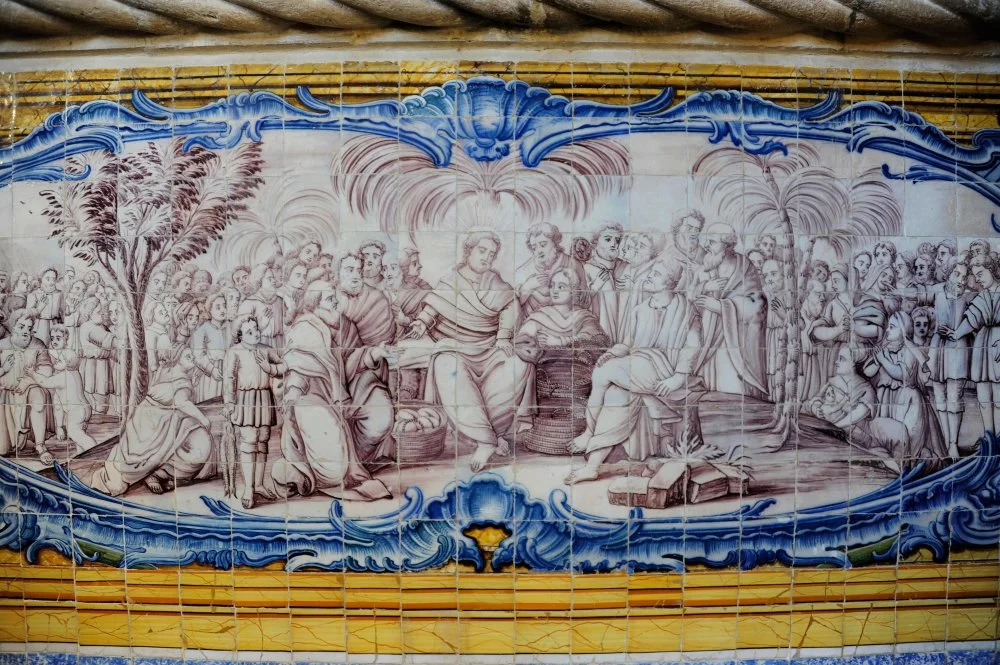
'Friday' by Walter Dendy Sadler. 1883/Gwtty Images
Several years ago, a contest was held in Portugal to select the ‘Seven Gastronomic Wonders of the Country’. A poll was conducted and twenty-one dishes were shortlisted. The competition was fierce—readers battled in the comments sections of various publications and experts sought the opinions of gastronomers and historians. The contenders included some meat dishes, soups, cheese—and pastel de nata. No one had even the smallest doubt about its eligibility on this list because this custard tart has been the pride of Portuguese bakers for over 300 years.
Clean Monastery Past
The classic recipe for pastel de nata was created inside the Catholic Jerónimos Monastery (home to the monks of the Order of Saint Jerome) in Santa Maria de Belém, which is now part of Lisbon. The legend tells us that egg whites were used to starch some monastic clothes, and the leftover yolks were sent to the kitchen.
We do not know who had the idea (or when!) to bake sweet egg custard in little pastry baskets, but in the eighteenth century, sea captains introduced custard tarts to Portuguese colonies and trade partners of the empire. Today, the gastronomical traces of those great voyages are still visible in local cuisine: Brazil, Macao, Mozambique, East Timor, and Japan consider the pastel de nata part of their national culinary culture. In Japan, pastéis de nata are also made with green tea (matcha).

Azulejos Ceramic In Ancient Refectory, Santa-Maria De Belem Church, Jeronimos Monastery, Hieronymites Monastery, Belem, Lisboa, Lisbon, Portugal/Alamy
Back in Portugal, a revolution in 1820 led to the closure of many monasteries. By 1834, the monastery of the Order of Saint Jerome was shut down, and the owners of a sugar factory in Santa Maria De Belém bought the custard tart recipe from the monks. In 1937, they opened a bakery named Pasteis de Belém, where the famous tarts are still made according to the secret monastery recipe. These tarts, known as pastéis de Belém, are considered the best and most authentic. The pastry and custard are prepared each morning in a ‘secret room’ by select individuals who have signed non-disclosure agreements in order to safeguard the recipe. The other bakeries in Portugal have to settle for baking unauthorized variations of the tart, which are sold under the generic name of pastel (or pastéis!) de nata.
The Portuguese egg tarts’ triumph continues to this day. Western Europe was the first to embrace them, and now almost every European city has a bakery specializing in them. Pastéis de nata are also extremely popular in Asia, where Portuguese influence continued for several centuries. Although decolonization was successful, the people of Macao and Goa decided to keep the beloved colonial tart.
So, Shall We Make Them?
Flour, eggs, sugar, and water are the main ingredients of this dessert. To make this, you will need puff pastry (either handmade or store bought) and egg custard. Roll the puff pastry into an even sheet, cut into equal pieces, and refrigerate. Place the chilled puff pastry into special metal molds (you can also use muffin cases) to create empty ‘cups’ with very thin sides. Place the prepared puff pastry back in the fridge while you make the custard. Before you start on the custard, though, preheat the oven to at least 240°C. Make a custard using around 250 ml of milk and water each, 4 egg yolks, 170 grams of sugar, a cinnamon stick, and some lemon zest. Feel free to experiment by adding cinnamon, nuts, berries, fruit, honey, or green tea.
Then, pour the custard into the molds, leaving around half a centimeter to the edge and put into the pre-heated oven for 10 minutes. When baked perfectly, the pastéis de nata have a golden top, often flecked with dark spots. The combination of the crisp, buttery crust and silky, creamy filling leaves people amazed and instantly addicted.
Each pastel de nata contains about 200–300 kilocalories. To burn 300 calories, you’d need to run for 30 minutes at a speed of at least 9 km per hour. Considering how hard it is to stop at just one tart, you might want to plan to run a half-marathon straight away!